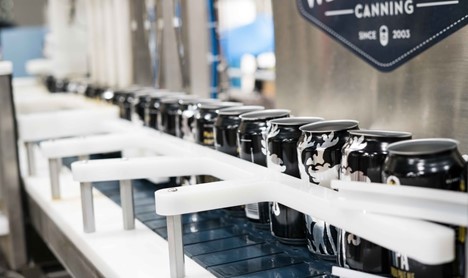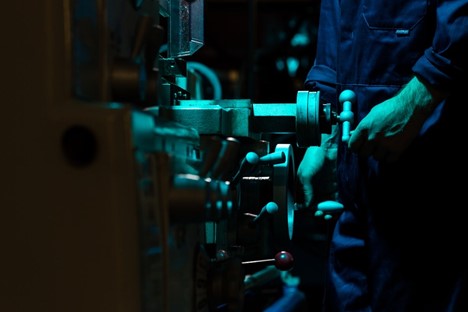How Often Does An Industrial Conveyor Belt Require Service?
Conveyor belts can be used for a variety of industrial purposes. While there are many use cases due to their flexibility, it’s important to ensure you’re keeping your system well maintained to ensure its longevity and reliability.
Industrial Conveyor belts are among the most often used pieces of equipment, so the best way to prevent downtime due to misalignment, mistracking and other operational woes is to provide regular servicing. It’s important to know what steps to take when maintaining your equipment, so being able to identify what problems to be on the lookout for is key. At the end of the day, we always highly recommend hiring a conveyor belt technician with years of experience servicing and repairing conveyor systems, but below are just a few of the most important steps you can take to keep your system running smoothly for years to come.
1. Avoid Build Ups & Snags
Many people experience issues with their industrial conveyor belt system due to excessive build ups and dirty conveyor belt parts. Whether you’ve got discarded material from the goods you’re transporting or from regular wear and tear, it’s important to perform regular visual checks to keep all parts clean and free of any and all obstructions.
Be cognizant of what products your sanitation and cleaning teams are using as part of their regular maintenance practices. Afterall, clean equipment is reliable equipment. Any chemical or solvent used for regular cleaning should be appropriate for your belt material. If you’re currently implementing a thorough cleaning routine, we recommend starting now.
Don’t forget, cleaning and obstructions aren’t the only things on your maintenance list. Ensure your belts are all installed and tracking correctly. Don’t overload your belts and machines. Remember optimal tracking and usage are necessary for reducing unnecessary wear on belts, maintaining belt life and ensuring a highly efficient plant. If you need help tracking these processes, don’t be afraid to contact a conveyor belt technician.

2. Don’t Let Repairs Wait
One of the most critical things you can do to ensure your conveyor belt’s lifespan is to prioritize repairs and conveyor belt servicing. If you notice that a part is missing or you’re experiencing a machine running roughly, immediately shut down your system and begin the inspection process. Check all parts to ensure everything is placed where it needs to be. Once you’ve found any – and all – issues, immediately begin repairs.

Belt imperfections and misalignment can be a leading cause of conveyor belt system issues. Check transitions, belt covers, route and material durability. The cover of the belt is the first line of defense, so ensure the thickness and material is suitable for your use-case and machine.
We often see people ignore small issues with their systems that then turn into large, complex problems. Avoid more downtime in the long run by prioritizing repairs and performance over production time.
3. Visually Check for Damage
Assign a team member to check your equipment regularly. Are you seeing frayed belts? Finding loose pieces left and right? Then it’s definitely time to repair and replace those parts. Don’t forget to keep track of all repairs, so that you don’t run out of parts prematurely.
If the belt is frayed, it’s time to replace it through conveyor belt servicing. Don’t wait until it’s fully damaged to change it out, you want your machines operating at their best possible capacity at all times. All parts of your equipment depend on each other, so don’t just look at your belts, but keep in mind that other pieces such as the frame, smaller bolts and all components should be checked too.
4. Keep a Backstock of Conveyor Parts
We can’t predict the future, but we can prepare for it. Do you have the sprockets, drives, cleats and motors ready to perform a repair on a dime? Having a backstock of the most essential conveyor belt parts will help ensure you reduce your downtime when an issue arises. Be smart about what you backstock and designate a team member to keep track of your conveyor belt part inventory. If you have multiple machines using the same belt, but only one belt, you’re not ready for the worst case scenario.
Identify which belts are critical to your operation. Stock emergency repairs, such as mechanical lacing or cold curing cement, so you can keep your most important equipment always on the go.
5. Track Your Conveyor Maintenance
All that work can seem like a headache, but if you plan to run a smooth operation you’ll need to ensure it happens consistently. Track your maintenance using a log or spreadsheet including what repairs or cleanings were performed, when, and by whom. This will help you ensure your backstock is also up-to-date. Don’t forget to regularly check logs to ensure work is getting done in a cadence that makes sense for your systems.
In addition to tracking your efforts, you’ll want to track the lifespan of your belts and machines. When were they purchased? How often are you changing the belts? Are belts still lasting as long as they have in the past? These can all serve as key indicators of how your systems are performing.
At this point, you can seek out a company that is able to repair your system or simply do it yourself if you have a team able to do so in-house!

Looking For The Right Conveyor System?
We hope this article helped you understand how often you should seek service for your conveyor system. If you need to find the right conveyor for your needs, JHFOSTER is your one-stop-shop for all conveyor belt solutions. Reach out to our experts to get your conveyor questions answered!
